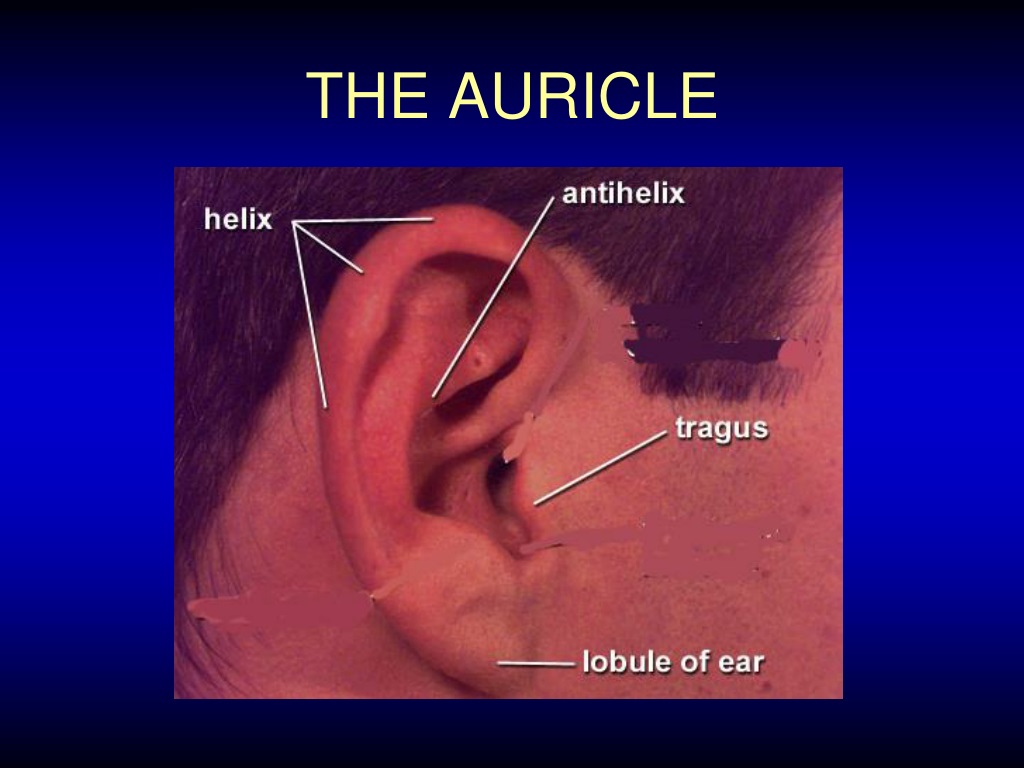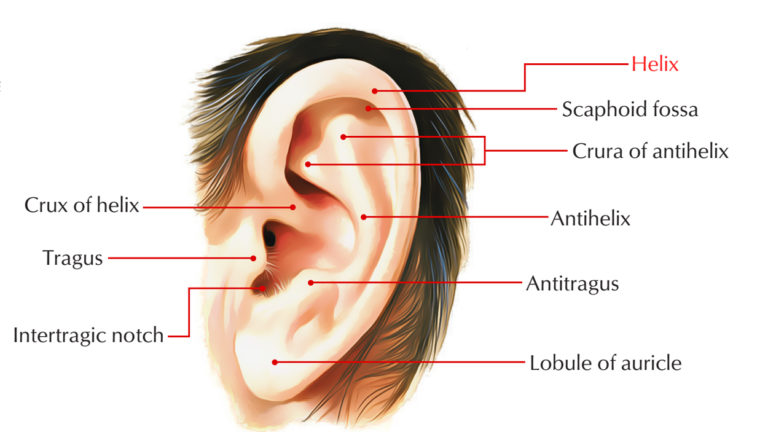

Fossa triangularis is the depression in the fork of the antihelix.External auditory meatus is the ear canal.Cymba conchae is the narrowest end of the concha.Crus of the helix is just above the tragus.Conchal angle is the angle that the back of the concha makes with the side of the head.Concha is the hollow next to the ear canal.Auricular sulcus is the depression behind the ear next to the head.Aperture is the entrance to the ear canal.Inferior crus (to the right of the fossa triangularis in the diagram).Superior crus (to the left of the fossa triangularis in the diagram).antihelix forms a 'Y' shape where the upper parts are:.The diagram shows the shape and location of most of these components: It is also called the pinna ( Latin for " wing" or " fin", plural pinnae), a term that is used more in zoology. Photographer: David M.The auricle or auricula is the visible part of the ear that is outside the head. org shows the left atrial appendage or left auricle.īy the way, did you know that one of the digits was called "digitus auricularis"? Read the story here. This image ( click here) courtesy of Wikipedia. These appendages when seen from the outside of the heart really look like little "boxer's ears". It is used in the word referring to the atrial appendages of the heart. Ī shortened version is the root term, meaning the same. is also used in the term, referring to the fibrocartilage found in the ear or.

A corresponding auricular surface is found in the sacral bone, the facies auricularis ossis sacri. The Latin term for this articular surface is facies auricularis ossis ilii. One of them is the (see image) referring to a roughened area in the medial aspect of the iliac bone where it articulates with the sacrum, forming the sacroiliac joint. The adjectival form is used in several places in human anatomy. The root term arises from the Latin word, which is a diminutive of meaning "ear". "Clinical Anatomy Associates, Inc., and the contributors of "Medical Terminology Daily" wish to thank all individuals who donate their bodies and tissues for the advancement of education and research”. Indian J Dermatol Venereol Leprol (2011) 77:101-3 “Henry Vandyke Carter and his meritorious works in India” Tappa, DM et al. “Henry Gray and Henry Vandyke Carter: Creators of a famous textbook” Roberts S. “A Glimpse of Our Past: Henry Gray’s Anatomy” Pearce, JMS. “The Anatomist: A True Story of ‘Gray’s Anatomy” Hayes W. Click on the image for a larger depiction. The image accompanying this article is a self-portrait of Dr. We are proud to use some of his images in this blog. His legacy is still seen in the images of the thousands of copies of “Gray’s Anatomy” throughout the world and the many reproductions of his work available on the Internet. Personal note: Had history been different, this famous book would have been called “Gray and Carter’s Anatomy” and Dr. Henry Vandyke Carter died of tuberculosis in 1897. In 1890, after his retirement, he was appointed Honorary Physician to the Queen.ĭr. He held several important offices, including that of Dean of the Medical School of the University of Bombay. Carter dedicated the rest of his life to the study of leprosy, and other ailments typical of India at that time. During his tenure with the India Medical Service he attained the ranks of Surgeon, Surgeon-Major, Surgeon-Lieutenant-Colonel, and Brigade-Surgeon.ĭr. In 1858 he joined as an Assistant Surgeon and later became a professor of anatomy and physiology. Carter took the exams for the India Medical Service. Carter never worked again with Gray, who died of smallpox only a few years later.įrustrated, Dr. Carter only received a one-time payment of 150 pounds. Carter was relegated to the position of illustrator by Henry Gray and never saw the royalties that the book could have generated for him. In spite of initially being offered a co-authorship of the book, Dr. While working on the book’s drawings, HV Carter continued his studies and received his MD in 1856. The book itself, about which many papers have been written, was immediately accepted and praised because of the clarity of the text as well as the incredible drawings of Henry Vandyke Carter. Having seen the quality of HV Carter’s drawings, Henry Gray teamed with him to produce one of the most popular and longer-lived anatomy books in history: “Gray’s Anatomy”, which was first published in late 1857. George’s Hospital in London, where he met Henry Gray (1872-1861), who was at the time the anatomical lecturer. Having problems to finance his medical studies, HV Carter trained as an apothecary and later as an anatomical demonstrator at St.


 0 kommentar(er)
0 kommentar(er)
